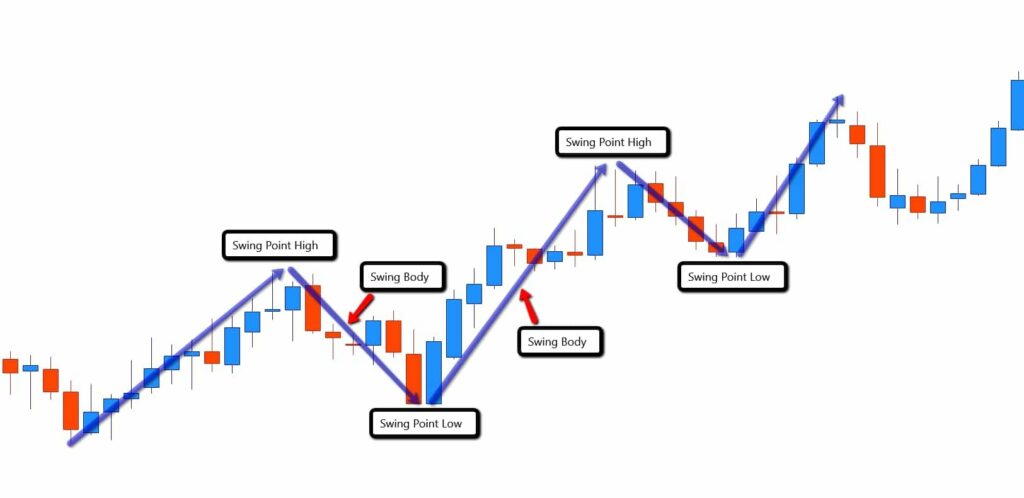Introduction

Image: hmarkets.com
Picture an acrobat performing a thrilling ascent up a towering rope, grasping the summit with determination before plummeting back down with an exhilarating rush. The ebb and flow of their aerial dance mirrors the pulsating movements of the forex market, where traders navigate the relentless surges and troughs of currency prices. In this dynamic arena, the “Swing High Swing Low” strategy emerges as a beacon of guidance, illuminating the path to potentially lucrative trading opportunities. This detailed guide delves into the intricacies of this pivotal strategy, empowering traders with the knowledge and techniques to harness its full potential.
Unveiling the Swing High Swing Low Concept
At the heart of the Swing High Swing Low strategy lies the identification of significant market momentum shifts. A “swing high” denotes a price peak, signaling a period of bullishness, while a “swing low” represents a price trough, indicating bearish sentiment. These extreme points effectively delineate the market’s prevailing trend, guiding traders in determining potential entry and exit points.
Executing the Swing High Swing Low Strategy
-
Trend Identification: Commence trading by meticulously identifying the current market trend using swing highs and lows. An uptrend is characterized by a series of ascending swing highs and lows, whereas a downtrend features descending swing highs and lows.
-
Trade Entry: Align your trades with the established trend. Enter long (buy) positions during an uptrend following a swing low and enter short (sell) positions in a downtrend after a swing high.
-
Target Setting: Define potential profit targets by measuring the distance between prior swing highs and lows. In an uptrend, set your target at the level of the most recent swing high, while in a downtrend, aim for the most recent swing low.
-
Stop-Loss Placement: Establish prudent stop-loss orders to mitigate potential losses. Position your stop-loss just below the swing low for long positions and just above the swing high for short positions.
-
Managing the Trade: Monitor your open trades closely and adjust your stop-loss and target levels as the market fluctuates. If the price reverses direction and breaches your stop-loss, exit the trade promptly to minimize losses.
Advantages of the Swing High Swing Low Strategy
-
Trend Following: By aligning with the market’s prevailing trend, the Swing High Swing Low strategy enhances the probability of profitable trades.
-
Objectivity: The strategy relies on clearly defined technical indicators, minimizing subjective decision-making and emotional biases.
-
Flexibility: The strategy can be applied across various time frames, from short-term intraday trades to long-term investments.
Limitations of the Swing High Swing Low Strategy
-
Lagging Indicator: Swing High Swing Low is a lagging indicator, relying on past price action. As a result, it may not effectively capture sudden market reversals.
-
False Signals: Occasionally, the strategy may yield false signals, leading to unprofitable trades.
Conclusion
The Swing High Swing Low strategy is a valuable tool for forex traders seeking a structured approach to identifying and capitalizing on market trends. By meticulously following its principles and adhering to sound risk management techniques, traders can navigate the complexities of the forex market with confidence and potentially enhance their trading outcomes. Remember, consistent research, patience, and a keen understanding of market dynamics will further empower you in your pursuit of forex trading mastery.

Image: www.dailyfx.com
Swing High Swing Low Trading Strategy Forex






